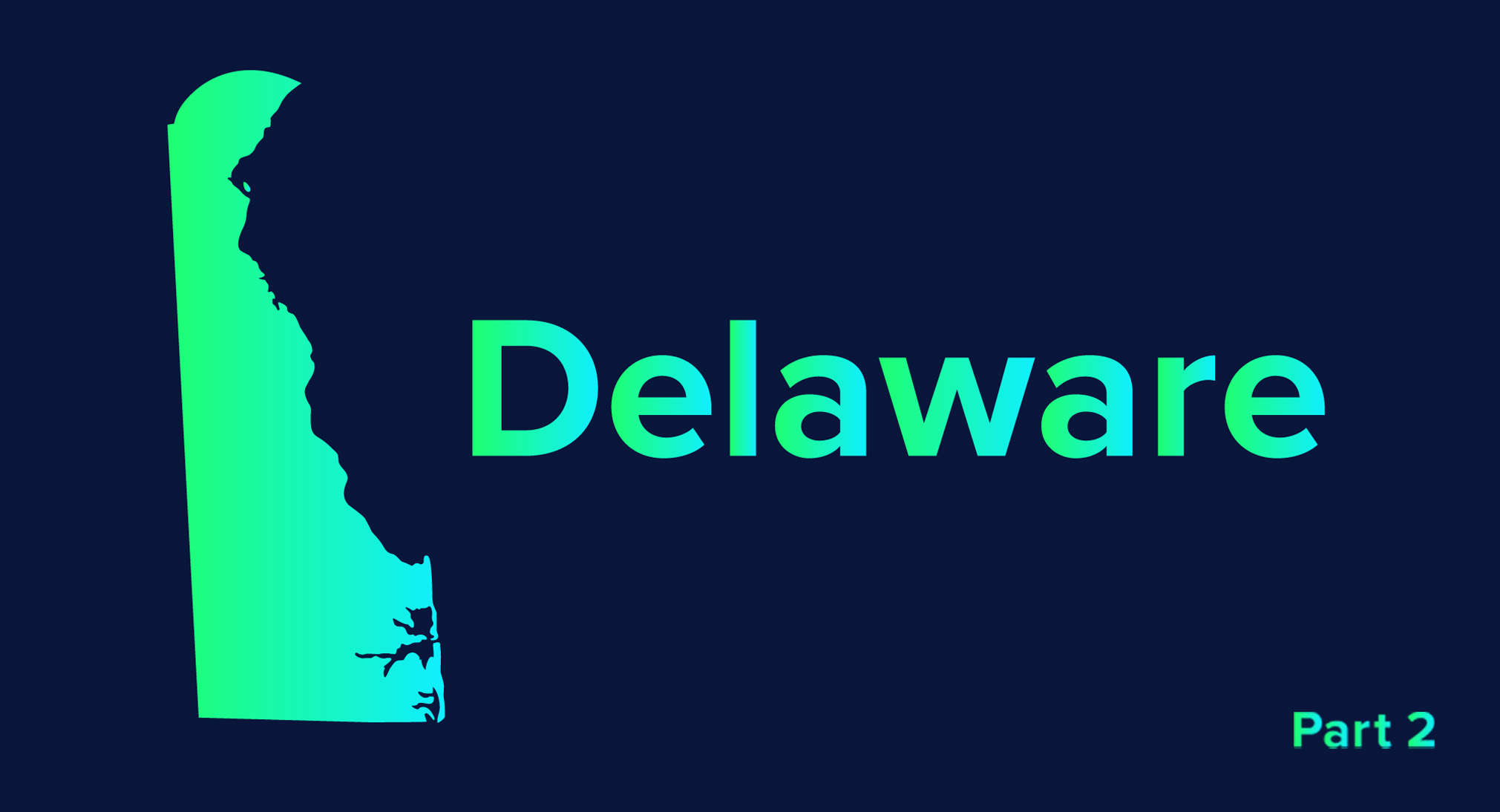In Part 1 of our spotlight series on state implementation of high school work-based learning, we took a look at the origins of Delaware’s Pathways initiative and how state legislation helped lay the groundwork. In Part 2, Luke Rhine, Director, Career & Technical Education and STEM Initiatives for the Delaware Department of Education, and Paul Herdman, President and CEO of Rodel, discuss the integration of work-based learning opportunities into career and technical education paths, what a statewide intermediary can (and can’t) do to support stakeholders, and why state agency leadership is so vital.
In Part 1 of our spotlight series on state implementation of high school work-based learning, we took a look at the origins of Delaware’s Pathways initiative and how state legislation helped lay the groundwork. In Part 2, Luke Rhine, Director, Career & Technical Education and STEM Initiatives for the Delaware Department of Education, and Paul Herdman, President and CEO of Rodel, discuss the integration of work-based learning opportunities into career and technical education paths, what a statewide intermediary can (and can’t) do to support stakeholders, and why state agency leadership is so vital.
Q: Are WBL opportunities open to all students in Delaware or just those in a career and technical education path?
Luke: Work-based learning opportunities are integrated into our career and technical education (CTE) offerings, and all students are eligible to participate in CTE. We have a graduation requirement that requires students to complete three credits in what is referred to as a career pathway, which is essentially three courses in an aligned sequence. CTE is one example that youth can use to complete that graduation requirement; we also have young people who complete three credits in music or three credits in advanced math and science courses, etc. CTE pathways are open to all students; roughly 73% of all students in 9th to 12th grade are enrolled in a CTE program and about 65% of our graduating seniors complete a CTE program to meet that graduation requirement.
Our CTE programs are intentionally aligned to the registered apprenticeship system as well as to two-year and four-year degree systems, so students are exiting with significant early college credit and/or credentials. Our work-based learning program exists on top of that programmatic model, to allow students to earn additional high school and college credit as well as hours that can be used towards on-the-job training requirements in the apprenticeship system. When students move on to higher levels of education, that credit then counts towards a degree or credential rather than as elective credit. The benefit of these career pathway programs, from the student perspective, is that if the industry you’re exploring is for you, great, you have a substantial head start into what comes next — and it didn’t cost you anything to figure that out. But if not, no worries — you’ve still learned transferable skills that are applicable in another industry or occupation, and you can transfer that knowledge in a way that makes sense to you.
Q: Delaware has a statewide intermediary, the Office of Work-Based Learning out of Delaware Technical Community College. How did that come to be and how effective has that strategy been in supporting all WBL stakeholders?
Paul: The Office of Work-Based Learning started in part through our visit to Switzerland. It came out of this concept of “Industry Councils,” or the idea of connecting employers in a given industry with training providers in that same industry. Building an intermediary was also one of the key recommendations of Jobs for the Future.
Luke: What we heard from employers was essentially they did not know how to plug into school systems. The Office of Work-Based Learning helps remedy this by creating a single place in which we develop communications, agreements, partnerships and more. It also created a way in which we could work with employers who were difficult for school systems to develop relationships with. For example, ChristianaCare, a local healthcare system, is one of the state’s largest employers, serving our largest county where 60% of our population lives. There’s 1,000 different ways that you could build a relationship with that organization and a school could spend hundreds of hours trying to get to the right person. Whereas by utilizing an intermediary, that leveraged engagement can be made by one organization and then shared across multiple school sites. Another benefit is to have an organization focused on employer recruitment — someone to go get the big employers, go build relationships, be out in the community, be out in the field, connect with the state Chamber of Commerce, connect with other employer groups or associations, and so on. The positioning within our community college system was incredibly helpful. We have a very robust community and technical college system with a workforce development mission and tens of thousands of existing relationships with employers.
Paul: All that being said, an intermediary can’t do everything. Sometimes you may need to bring in an organization that’s a little more nimble or has a specific expertise to help with work-based learning. One interesting wrinkle is we’ve been able to partner with nonprofits, like Code Differently and Junior Achievement, to help employers engage school-aged kids and navigate remote work-based learning opportunities with them. These groups can be a partner of the company, who can deal with the troubleshooting day to day, and the relationship with the high school and the kids. It was a piece that we didn’t really anticipate and, candidly, the Office of Work-Based Learning doesn’t have the capacity to do that across the entire state, so that was an interesting add-on.
Q: Besides an intermediary, what else is crucial for states looking to enhance their work-based learning programs?
Paul: Agency leadership like Luke’s is absolutely essential. Without Luke as a manager within the state agency, connecting the dots with the Department of Labor and other partners, we don’t get this initiative off the ground. You need somebody who’s going to be the glue, to really set the stage for the districts and create the incentives for them to be involved. Right now, we have every high school in the state involved in [Pathways] in just the first five years. I’ve never seen that in any other initiative that I’ve been involved in, where every district in the state is so bought in.
Luke: We also have been really fortunate to have strong executive leadership, initially with Governor Markel and now Governor Carney, who carved out a million dollars to invest in the Office of Work-Based Learning this session. Executive sponsorship by cabinet secretaries across multiple agencies, specifically the Departments of Education and Labor, has also been crucial, as has the support of the president of our community college system, the executive director of our state workforce board, folks like Paul, and leaders at other partners like the United Way of Delaware. They have been powerhouses in terms of navigating state systems and advocacy with the community, and also just very strategic in terms of advice and direction.
There was also a strong push from our own agency perspective, at the Delaware Department of Education, to have expectations for not just college readiness, but also career readiness. We wanted to evolve and create options for every child and then be conscious of different kinds of post-secondary pathways that lead to different occupations. And our school system leaders, our superintendents and local school boards, have been totally on board. They see initiatives like Pathways and work-based learning as a way to further integrate the community voice, as well as the employer voice, into their school buildings.For more on Delaware’s pathways progress, read: Statewide Pathways Foundation Built to Last, via Rodel’s blog, and how new investments by ASA and others are helping to expand Pathways to more Delaware middle and high school.




